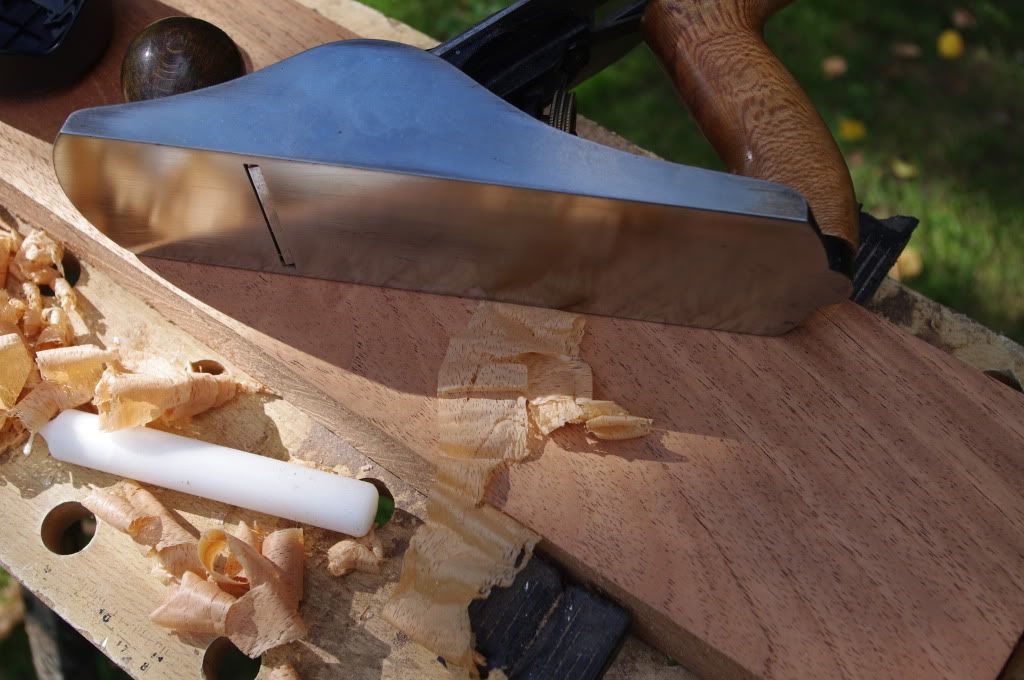Quick Update
Since I thought that my blade was not straight enough I decided to grind the blade flatter using my honing guide and sand paper. I have also devised a good way to test how flat the end of your blade is:
-Hold the blade edge on some float glass above, looking towards a bright source of light from about 2 feet away (ie. a light bulb). The extent of light you can see through your blade tells you how flat your blade is.
My blade is not flat but is much improved. I've noticed also that my secondary bevel looks alot neater than before. After honing I went outside to test the ease of planing. You'll note I found some bench 'dogs' to hold the wood on the amazingly sturdy red devil bench
Mini Conclusion
-Remember I said earlier that the blade used to get jammed at the start of planing a board.Well it happens no matter what condition your blade/plane is in; I figured it out.
When my blade was not as straight, in order to get a ok width shaving I had to increase the depth to such a depth planing becomes hard and hence the jam at the start (tis a wee bit harder to plane all the way along as well).
SO why is my blade not straight after grinding. Its simple the jig on my wetstone grinder sucks as it went in straight (I used a bench circular sander and a square(to check for blade squareness) to pre straigthen it since I strongly suspected the grinding jig) and it came out camfered
-Wax helps a little (only if u use it sparingly), noticably but still a little
PS: I've tried to grind free hand (on another blade) and the results are not too great to behonest. Could be ok for chisels but for plane irons, the blade is much wider than the tiny tool rest making it difficult. I can undertand free hand sharpening but free hand grinding yikes
I'll think I stick to honing guides and anything that makes my life easier
I guess Mr Rimsdale would be biased towards anything freehand due to the site in his link easier but for wierd chisels like skews I might try and learn free hand sharpening.
LOL oilstones.......I thought free hand sharpening was supposed to quicken things up - joke

Anyone notice when u try and type stuff and submit it, the site muddles up all your words? I've had to edit this 100x, sorry for any grammar mistakes





